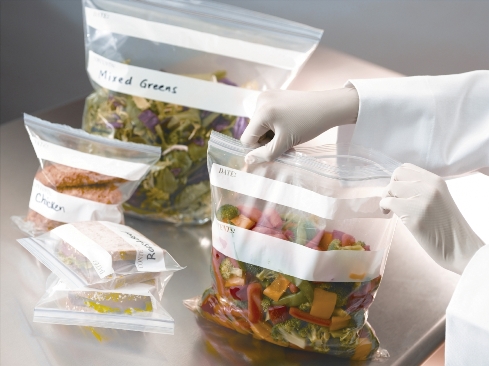Reducing Waste, Raising Safety: Smart Strategies for Managing Food Waste
In the face of increasing food prices and an ever-increasing demand for foodservice operations to reduce the amount of food wasted, foodservice operators are increasingly looking to implement and develop programs to help stem the amount of food wasted in their businesses.
Across all sectors of the food supply chain, the Food and Agriculture Organization of the United Nations has estimated approximately 32% of all food produced in the world is lost or wasted. In the foodservice industry, 85% of the unused food is thrown out, only a small amount is recycled or donated.
Managing food waste effectively while maintaining high food safety standards can be challenging, but it’s a crucial part of running a sustainable and customer-centric foodservice business. While it may not be evident at first glance, food waste and food safety are closely related. When food is discarded improperly or not stored correctly, it can lead to contamination, pest infestations, and the spread of harmful bacteria. Improper disposal of food waste also increases the risk of cross-contamination between raw and ready-to-eat foods.
Managing food waste efficiently involves balancing the need to minimize waste with the responsibility of ensuring food safety. Foodservice operators must make sure that food is discarded safely, and that they are not creating unsafe conditions in the process.
One of the most important steps in managing food waste is proper food storage. Make sure to have a standard operating procedure for storing leftover food or surplus ingredients. This involves using the FIFO (first in, first out) method; ensuring older products are used first helps. Keeping track of expiration dates is also key in this regard.
When storing leftovers, ensure they are sealed in air-tight containers to maintain freshness and prevent contamination. Label containers with dates and contents to ensure they are used in a timely manner.
Over-ordering ingredients and large portion sizes are common contributors to food waste. By adopting portion control techniques, foodservice operators can reduce waste and help ensure that food safety is maintained.
While some food waste is inevitable, it’s essential to dispose of it properly. Recycling and composting food waste not only minimizes landfill waste but can also improve the overall hygiene and safety of your operation.
For food scraps that can’t be repurposed, composting offers an environmentally friendly way to dispose of waste. However, composting needs to be done properly to avoid attracting pests and creating unsanitary conditions. Designating separate bins for food waste, recyclables, and general trash helps ensure that food waste is properly discarded, minimizing contamination risks in the process.
…Food donation laws vary by region, so foodservice businesses should stay informed about local rules regarding food donations, including food safety protocols for donors.
In many cases, surplus food can be donated to local charities or food banks. However, donating food comes with its own set of food safety considerations. Operators must adhere to food safety guidelines to ensure donated food remains safe for consumption.
Food donation laws vary by region, so foodservice businesses should stay informed about local rules regarding food donations, including food safety protocols for donors. The health inspector is always a great place to start with questions related to the laws in your local area.
An often-overlooked aspect of food waste management is training staff to handle food properly. Employees should be well-versed in food safety protocols, including safe food handling, storing, and discarding practices. Regular staff training can help reduce food waste while maintaining high standards of food safety. Encouraging staff to be mindful of waste, whether by reusing ingredients or taking steps to reduce excess waste, can lead to significant improvements in both food safety and waste management practices.
Managing food waste while maintaining food safety is a delicate balance in retail foodservice operations. By implementing effective storage, portion control, recycling, and donation strategies, foodservice businesses can reduce waste without compromising the safety of the food they serve. Risk Nothing.
READ MORE POSTS
Routes of Foodborne Illness & Germs
From your sniffling coworker to the raw chicken on your kitchen cutting board, everyday life is full of potential infectious hazards. With germs so common and seemingly everywhere, knowing how germs spread is vital to preventing infection and foodborne illness. There are seven possible ways for the transmission of bacteria and viruses to take place. Although some of these microorganisms in our environment are good for us and protect us, disease causing pathogens are the germs or bad guys.
Handling Leafy Green Salad
We have had several produce outbreaks of foodborne disease from our lettuce, spinach, and other greens in the last several years that have been devastating to the produce growers and distributors, retail grocery stores, restaurants, and consumers.
Food Packaging Safety in a Vacuum
Extending the shelf life of fresh foods has come a long way in the food industry since curing meats with salt and sugar or canning vegetables with heat processing. The food service and consumer markets needed some better visual packages to draw the eye to the freshness factor and the technology of food packaging has filled our dinner plate. Vacuum packaging and modified atmosphere packaging, shortened to “MAP”, are the terms used for the method of food packaging used every time we choose convenience over more complex scratch meal preparation. According to industry statistics, billions of packages of vacuum and MAP-packaged foods flood the marketplace today. In both modified-atmosphere and vacuum packaging, food is packaged in a pouch made of barrier film.
The Eleven Commandments of Food Safety at Your Restaurant
Lists help us remember all kinds of information. Given the list of recent national foodborne outbreaks in the news, keep repeating this list to your food service team. They are kind of like “commandments”. As a professional in a food service facility we should think of the very basic food safety concepts that every crew member should aspire to learn, even though this list may have different priorities based on your menu. The first 3 apply to anyone who serves food, from a bag of popcorn to a full course meal. As chefs or managers, if we can “set the example” by repeating good food safety practices visibly to the crew, it will help them understand how important it is to the success of your facility. Thou shalt:










